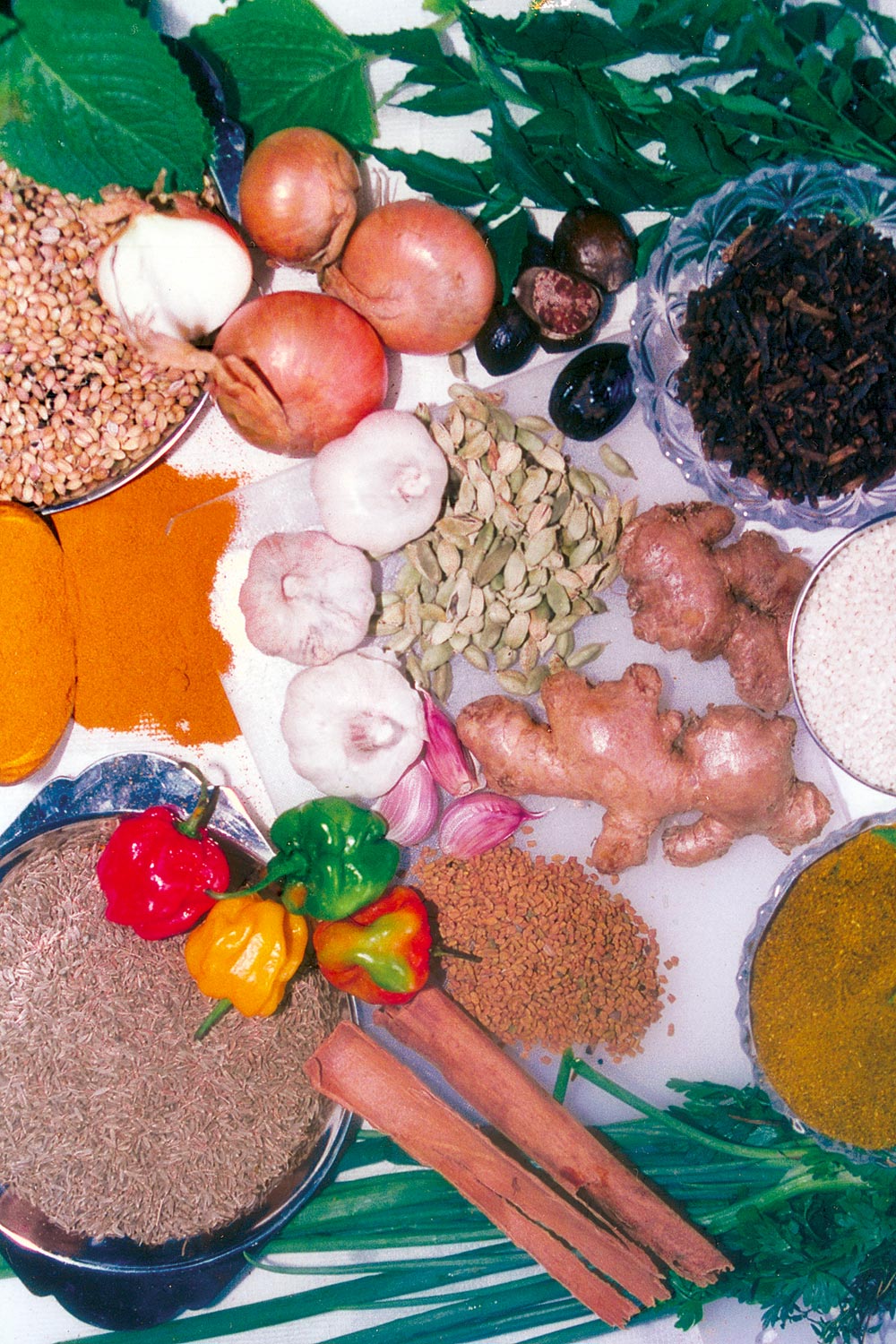There was a time when no self-respecting Trinidadian housewife would be caught dead using a recipe book. Following a written recipe was practically an admission of a lack of culinary skill, particularly if the recipe was a local one. I certainly never saw my grandmother fussing about in the kitchen with a cookbook, when preparing the dal and rice and bhaji that I loved as a boy. She would have learned her recipes from her own mother, and she from hers – everything passed on by word of mouth, ingredients measured by the pinch and the hand rather than the spoon and the cup.
Times have changed. Recipe books are now among the top sellers in the bookshops, and not just among that dwindling species, the housewife. Local titles are as popular as anything by Rachael Ray or Jamie Oliver. Television chef Wendy Rahamut is the author of no fewer than three cookbooks, and The Multi-Cultural Cuisine of Trinidad & Tobago & the Caribbean (to give the cookbook produced by the alumnae of the Naparima Girls’ High School its proper title) could be said to be to local cooking what the Larousse Gastronomique is (or was) to French cuisine.
Another title that has found its niche is Caribbean East Indian Recipes, first published in 1992 and now in its third edition. Written by Kumar Mahabir and his wife Mera Heeralal, the book is a collection of traditional vegetarian recipes, from snacks to main courses to desserts, breads to vegetables to pickles, and its continued appeal stems from the fact that the recipes are all authentic to the Caribbean, and in particular Trinidad.
“Most of the Indian cookbooks around are really India-Indian cookbooks,” explained Mahabir, when I interviewed him and Heeralal. “This cookbook was done in consultation with a number of [Indo-Trinidadian] women, mainly, of all generations.” Heeralal says, “The difference with this cookbook, I think, is that it is truly Indo-Trinidadian. If you are born Trinidadian, most of the ingredients you’ll be familiar with.”
Mahabir cites as an example bandhaniya (chadon beni), the green, cilantro-like herb used to flavour many Indo-Trinidadian recipes. Bandhaniya is alien to Indian cooking, and even most Indo-Guyanese cooking.
Among the recipes are ones that most people would know, if not from preparing them at home, then from enjoying them at Indian weddings and other functions, recipes such as curried channa and aloo (chick peas and potato), pumpkin talkari, and curried mango. There are also lesser-known recipes such as lowkee (bitter gourd) talkari and the fried banana sweet, goolgula. Included as well are illustrations of some of the more unusual vegetables used in Indo-Trinidadian cooking, and a glossary of Hindi terms.
Caribbean East Indian Recipes is, not surprisingly, popular among younger generations of Indo-Trinidadians, who may not have taken the time to learn the recipes first-hand, and would now need step-by-step instructions in making certain dishes.
“When I learned to cook from my mother,” says Heeralal, “there were no measurements. This way, with the measurements, everything is precise. It’s almost like you can’t go wrong.”
Of course, Indo-Trinidadians aren’t the only ones who enjoy Indo-Trinidadian cuisine.
“If it’s one aspect of Indian culture that non-Indians, and particularly Africans like, it’s the food,” observes Mahabir, who teaches at the University of Trinidad and Tobago and has written a number of books on Indo-Trinidadian history and culture. The popularity of street food like doubles and aloo pies (recipes for both of which are in the book) is well known, and the number of restaurants serving Indo cuisine to a varied clientele has mushroomed over the years. (While I interview Mahabir and Heeralal in the food court of an east Trinidad shopping mall, we’re seated in front of a restaurant called the Curry Spot.) Mahabir recalls an Afro-Trinidadian gentleman who was opening a restaurant in the United States coming to buy a copy of the book, so that he could put Indo-Trinidadian dishes on the menu.
The most popular dishes in the book, however, the ones people most want to learn how to make, are the desserts. Heeralal admits that “the sweets come first” and mentions in particular the light and fluffy parsad, and kheer (rice pudding), which is sometimes eaten as a savoury dish. Mahabir himself is keen on reviving forgotten dishes, such as cassava roti, and has identified more of these to be included in the next edition.
As for yours truly, someone who is usually quicker to try his hand at exotic fare like spinach and lemon risotto, or pork medallions in a mushroom and brandy cream sauce, maybe it’s time I learned to prepare some of the simple, delicious dishes I grew up eating and perhaps have, unfairly, come to view as rather pedestrian. I will, just as soon as I get my copy of Caribbean East Indian Recipes back from my grandmother.




















